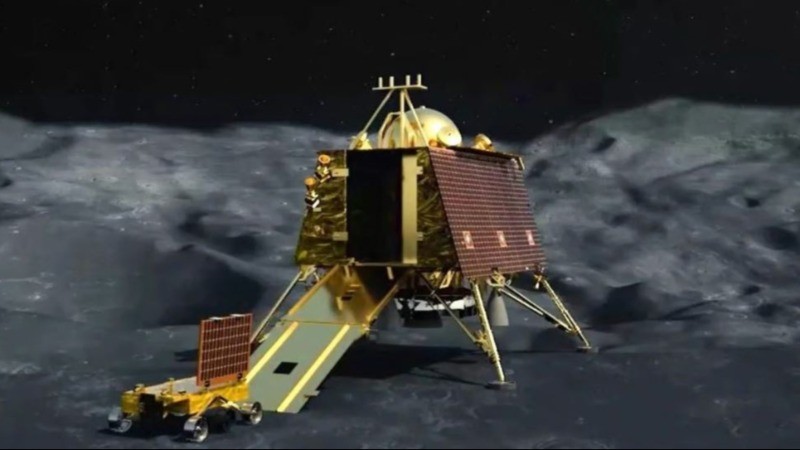
New Delhi: India’s Chandrayaan-3 mission has achieved another remarkable milestone as the Pragyan rover has discovered a buried crater on the Moon, measuring 160 kilometers wide. This ancient feature, located near the rover's landing site, was reported by scientists from the Physical Research Laboratory in Ahmedabad and published recently in Science Direct.
The crater lies about 350 kilometers from the South Pole-Aitken basin, which is the largest and oldest known impact crater on the Moon. Researchers believe this newly discovered crater is one of the Moon's oldest geological features, even predating the formation of the South Pole-Aitken basin. Over billions of years, it has become buried under layers of debris from later impacts, especially those resulting from the massive South Pole-Aitken event. Although the crater has significantly degraded, its remnants provide insights into the Moon’s early history.
The Pragyan rover utilized its high-resolution optical and navigation cameras to capture detailed images of the crater's structure. These images have offered important insights into the Moon's geological evolution, revealing how the surface has been shaped by a series of catastrophic impacts over time. The rover's landing site, rich in impact debris, has proven to be an excellent location for scientific exploration.
The South Pole-Aitken basin itself is covered by nearly 1,400 meters of impact debris, with additional material from smaller craters contributing to the complex landscape. This ancient regolith, which consists of dust, rock, and debris on the lunar surface, holds crucial information about the Moon’s formation and evolution. By examining the ancient crater, scientists aim to deepen their understanding of the processes that shaped the early Moon, which will be valuable for future lunar missions and broader space exploration efforts.
Meteorite Impacts or Heat Effects May Explain Moon's Seismic Activity, ISRO Finds
Earth to Welcome a Mini-Moon for Two Months: What You Need to Know
India Set to Launch Gaganyaan by Year-End: ISRO Chief Confirms